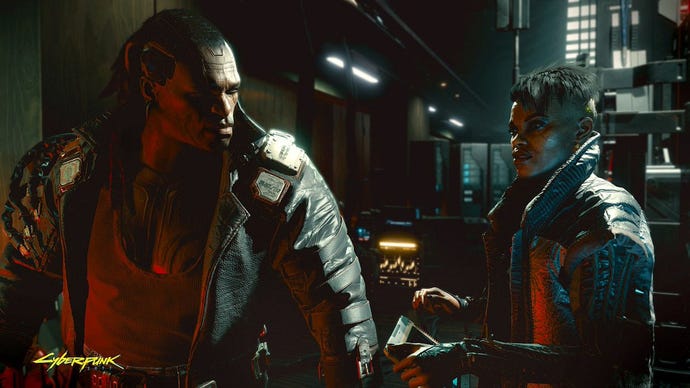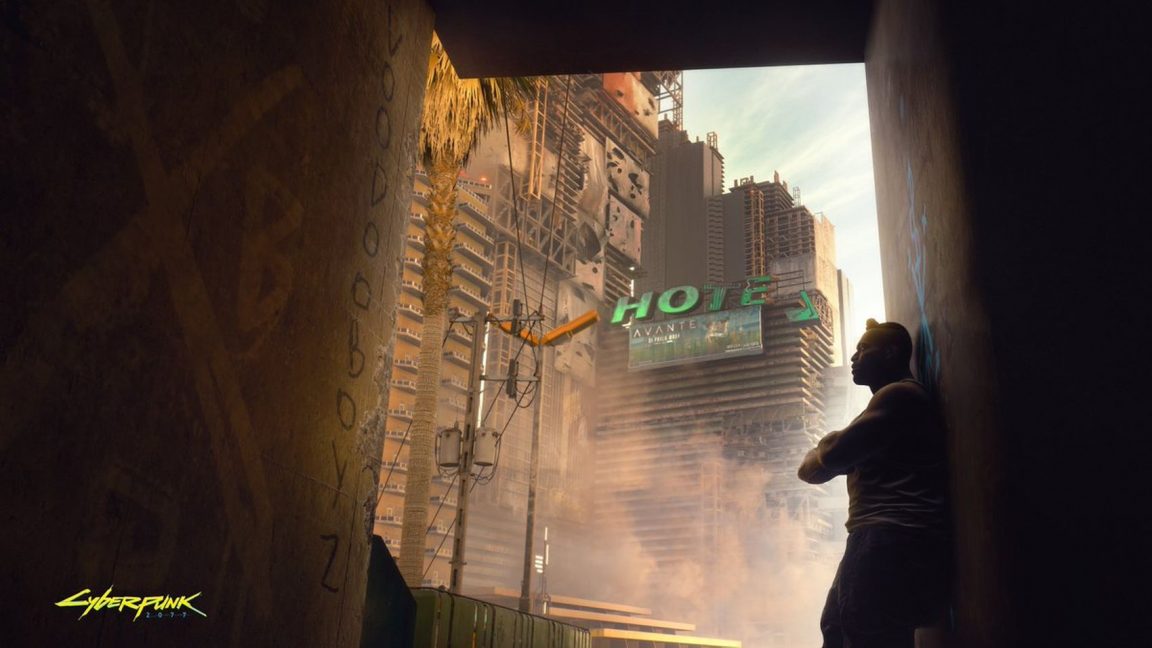Cyberpunk 2077 is a reminder of how beautiful RPGs have become
Cyberpunk 2077 doesn’t need to paint everything in neon - the glow-up of the RPG is clear to see. Over the last decade the entire genre has undergone a steady but significant transformation that’s worth taking a moment to celebrate.
It used to be that, as an RPG fan, you accepted a trade-off - scale and reactivity in exchange for what you could charitably call rough charm. For a long time, from Doom in 1993 all the way up to Crysis in 2007, it was only really first-person shooters that got to be gorgeous.
That was partly because the FPS genre’s immersive detail attracted pioneering programmers and engineers like John Carmack, Michael Abrash, and Tim Sweeney - the impact of their work still felt today in engines like id Tech, Unreal, and CryEngine. But the beauty of the FPS was also enabled by the fact that its remit was narrow - often literally, thanks to the genre’s infatuation with corridors. Much of its tech was based on funneling resources into the svelte strip of the world you could see at any one time.
By contrast, RPGs suffered because they promised almost the opposite. Their primary appeal was vast maps, which you could navigate with at least some degree of freedom. The idea worked well enough in isometric series' like Fallout and Baldur’s Gate, in which the world was assembled from sprites and tiles. But the industry-wide move to 3D that followed was not kind. In those RPGs that offered continuous exploration, the instinct was to climb to the highest peak and look out over as much of the landscape as possible - a graphics programmer’s nightmare.
Compounding the issue was the other distinguishing feature of the genre - consequence. By and large, developers try to avoid building any content the player is unlikely to see, since the last thing a packed schedule need is unnecessary indulgence. But RPG studios make a habit of developing alternate pathways, knowing that players appreciate not only the choice, but the knowledge they’ve sacrificed a real option. Think of the six different openings to Dragon Age: Origins. Now think of the pressure on the art department.
Making an RPG means spreading your resources thin, and as players we accepted the consequences of that - the shoddy animations, the glitching terrain - knowing that the gains were worth it. But over the last decade, the visual gulf between RPGs and the linear games that led the push on graphics has closed completely. Cyberpunk 2077, the most anticipated RPG of our times, is also a technical stunner - filling its streets with enough high-fidelity NPC bustle to suggest Toyko’s Shibuya Crossing.
How did we get here? The answers are in the black box - the chunky old Xbox, to be specific. Western RPGs had customarily been a pleasure restricted to the PC market, but the PC-like hardware of Microsoft’s machine encouraged Bioware to get on board. In Knights of the Old Republic’s third person view, dust blew across the surface of Tatooine - an early taste of the ways 3D could help RPGs deliver on atmosphere and sense of place.
KOTOR’s first Xbox shipment sold out in four days. And an oddball RPG from another PC developer, Bethesda Game Studios, enjoyed similar success. A year after its release, Morrowind was still among the top ten best-selling Xbox games - a distinction it shared only with Halo.
Consoles had welcomed RPGs into the mainstream, and multiplied their market potential - leading to big-budget follow-ups like Mass Effect and Oblivion. In an early demo for Morrowind’s sequel, a bucket suspended over a well tipped gradually sideways, unbalanced by the arrows fired into its flank. Finally, RPGs were technically wowing press and fans at shows like E3, the way shooters had in generations past.
Since then, developers have become savvier with their resources. By Fallout 3, Bethesda had identified a problem with repetition in Oblivion’s world design - ‘art fatigue’ - and a way to solve it. Oblivion had reused entire rooms of Ayleid ruins, down to the feng shui, but Fallout 3’s level designers placed familiar assets in more granular fashion to achieve fresher results.
It helps, too, that the FPS developers have followed suit. Games like S.T.A.L.K.E.R. and Boiling Point introduced seamless, RPG-like open worlds to the genre - and with Far Cry 2, Ubisoft made the practice a central part of its business. Over the past decade, triple-A teams have been perfecting their production pipelines, streamlining the process of creating RPG-style landscapes. As those developers leave to join other studios, their experience zips out across the industry like so many flying cars.
Today, it comes as no surprise that a game like Cyberpunk can look every bit as good as its linear peers. But it’s worth taking a moment to step back and appreciate that beauty, in a genre where looks on a par with the great id shooters once seemed more of a pipedream than a pipeline problem.









_ddwYK80.png?width=291&height=164&fit=crop&quality=80&format=jpg&auto=webp)


